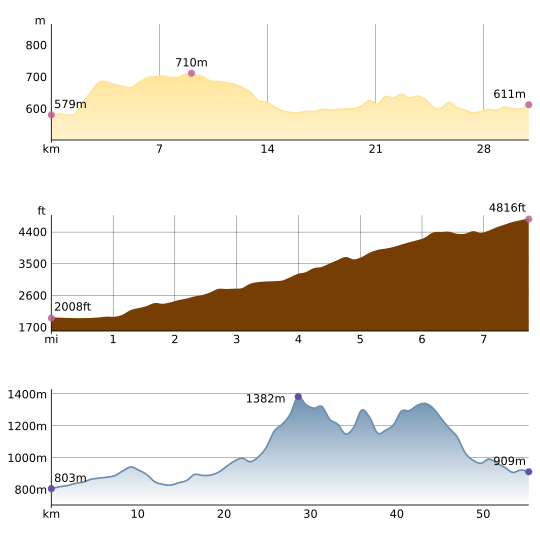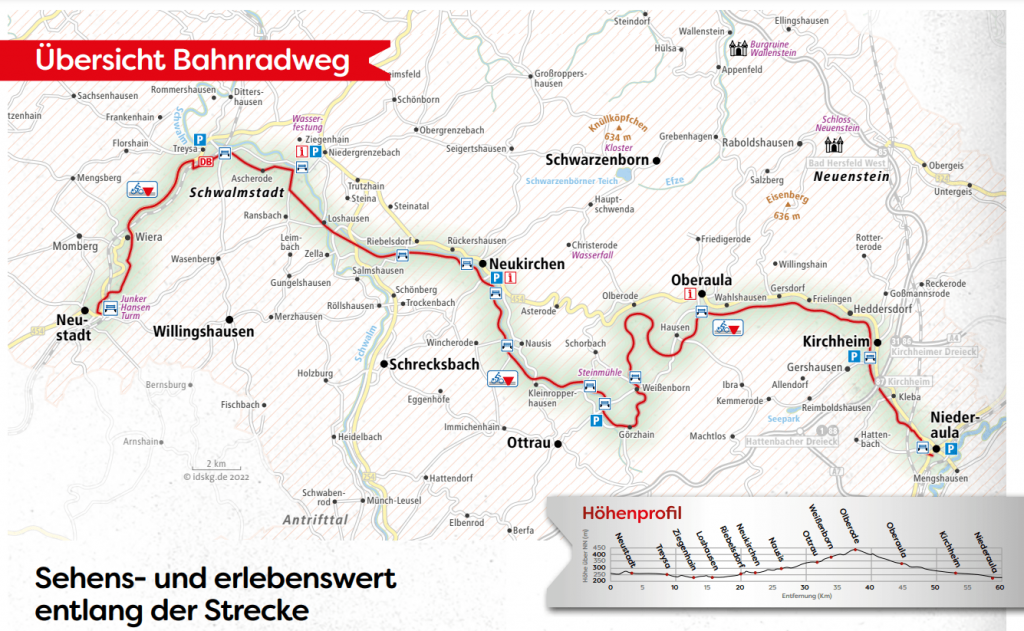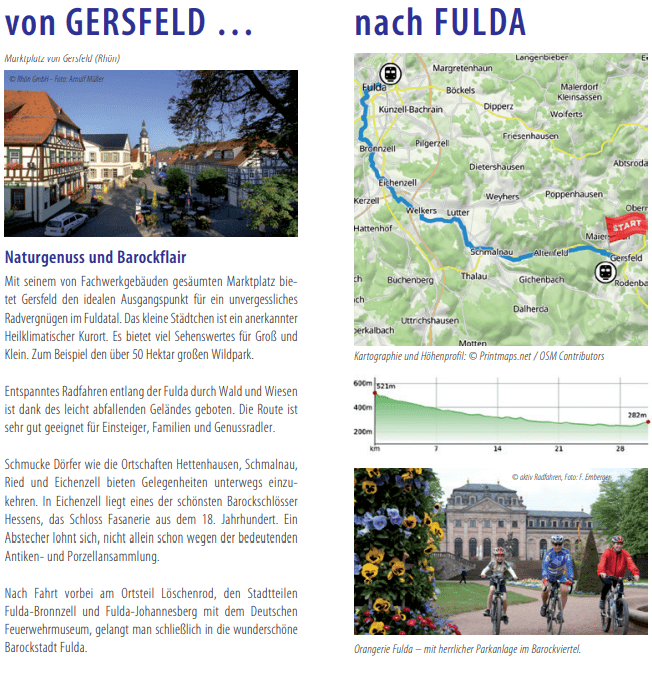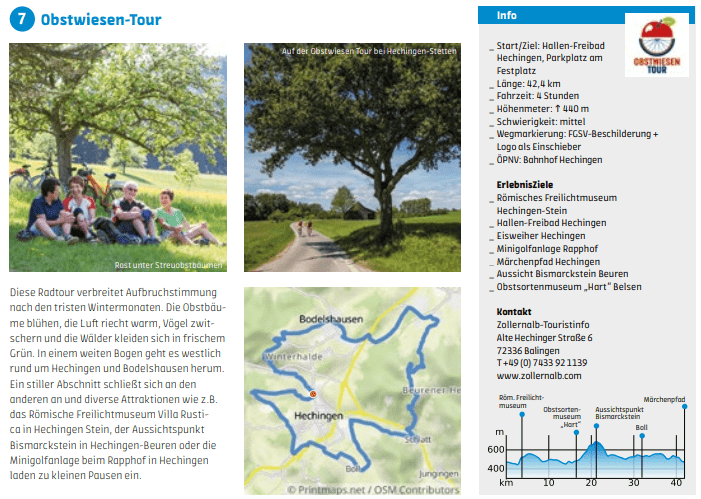Here you can create an elevation profile that you can use for free in print materials and your online communication. Simply upload your GPX , KML or GeoJSON file below or draw your route by hand, choose your settings and click “Download”. You will receive a layered SVG file that you can edit in Adobe Illustrator, Photoshop, or Inkscape – or use on a web page. Have a look at this downloadable sample SVG.
Usage requirement: You need to credit the altitude profile with © Printmaps.net (small and near the image), plus set a link when used online.
Need to create printable cartography?
Need an API?
Check out our Elevation API
Result:

| Altitude Difference | |
| Distance | |
| Walking Time | |
| Normal Cycling Time | |
| Offroad Cycling Time | |
| Race Cycling Time |
Settings:
| Print width: | mm (from 50 to 300mm) |
| Curve: | |
| Font Size: | (from 20 to 70) |
| Elevation markers: | |
| Grid: | |
| Units: |
Upload or draw your route:
What are elevation profiles?
An elevation profile, also known as a topographic profile, cross-section or topographic cut, is a way to show the terrain’s shape by cutting across a topographic map. It illustrates the elevation changes along a specific path. Contour lines on the map represent areas of equal height above sea level. While the horizontal scale of the profile often matches that of the map, the vertical scale is usually exaggerated—typically three to five times larger—to better highlight differences in elevation. This helps make the land’s features more visible, especially in areas with subtle changes in height.

What altitude profiles are

An elevation or altitude profile is a visual representation of the changes in terrain along a route. It provides critical information about the slope, elevation gain, and difficulty of a path, making it an essential tool for outdoor enthusiasts, cyclists, and hikers. By viewing an elevation profile, users can quickly assess how challenging a route might be and plan their journey accordingly.
Creating a GPX Elevation Profile
Our elevation profile editor allows you to easily create a gpx elevation profile from your GPX files. Simply upload your GPX data, and the editor will generate a clear graphical representation of the route’s elevation changes. This feature is ideal for those who want to convert their digital route data into an informative and attractive elevation profile for printed maps or guides.
With our tools, creating a detailed and visually engaging altitude profile is simple and intuitive. Whether you’re an individual planning your next adventure or an organization creating promotional material, our editor provides everything you need to turn your GPX data into an informative visual representation.

Elevation Profile in Printed Maps

Many people use our altitude profile generator to enrich printed products in tandem with maps from our editor, like cycling and hiking maps, event brochures, and travel guides. Incorporating an elevation profile from GPX data provides users with a comprehensive view of the terrain, enabling them to plan rest stops, anticipate challenging climbs, and estimate travel times more accurately.
Including elevation profiles in printed materials not only adds a professional touch but also equips users with the information they need to navigate routes with confidence. By using our elevation profile editor, you can generate beautiful and practical altitude profiles from GPX data, making them ideal for a variety of printed applications.
Frequently asked Questions
Our Elevation Profile Maker can be used in the browser without the need to download any software, create an account or login. Simply create your personalized elevation profile and download it.
By default, after downloading your elevation profile, you will receive it in the form of a PDF file, an SVG file for further post-processing, and a PNG file.
You can personalize the print size, font size, gradient color, stroke color, units, and the color of markers. If you want to, you can personalize it even further after downloading it in an image editing software of your choice.
The easiest way to track any route is by simply uploading a GPX file if you have one. If you don’t, you can select the starting and end point of your route by using the magnet tool and it will track the route on existing roads automatically. If your route does not follow along an existing road, you can draw the route by hand by using the freehand tool.
No. Whether you use our elevation profiles as static images in your posts or use the SVGs to make them interactive, no cookie collection is required, which ensures an uninterrupted user experience.
Recent Comments